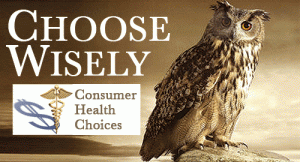Medicare: Frequently Asked Questions (FAQs)
Q: What is Medicare?
A: Medicare provides health insurance if you are retired and 65 or older, under 65 and receive Social Security Disability Insurance (SSDI), or under 65 and have End-Stage Renal Disease (kidney disease). It is funded by a federal payroll tax.
Q: What’s the difference between Medicare and Medicaid?
A: Medicaid covers people with limited incomes. It is funded by federal, state and county taxes.
Q: Are there different kinds of Medicare plans?
A: When you become Medicare-eligible, you can enroll in Original Medicare, the traditional fee-for-service program offered directly through the federal government, or you can enroll in a Medicare Advantage Plan, which is private insurance offered by companies that contract with Medicare.
Original Medicare allows enrollees to go to nearly all doctors and hospitals in the United States. Medicare Advantage Plans have network restrictions, so enrollees will have more limited access to doctors and hospitals. However, Medicare Advantage Plans can also provide additional benefits that Original Medicare does not cover, such as routine vision or dental care, or gym memberships.
Q: What does Medicare cover?
A: Part A (Hospital Insurance) covers hospital, skilled nursing facility, home health, and hospice care. It is free if you have worked and paid Social Security taxes for at least 40 calendar quarters (10 years).
Part B (Medical Insurance) covers most medically necessary doctors’ services, preventive care, durable medical equipment, hospital outpatient services, laboratory tests, x-rays, mental health care, and some home health and ambulance services. You pay a monthly premium for this coverage which PEF reimburses.
Part C regulates Medicare Advantage Plans. Medicare Advantage Plans must offer at least the same benefits as Original Medicare (those covered under Parts A and B) but can do so with different rules, costs, and coverage restrictions. You also typically get prescription drug coverage as part of your Medicare Advantage benefits package. Many different kinds of Medicare Advantage Plans are available. You may pay a monthly premium for this coverage, in addition to your Part B premium.
Part D provides outpatient prescription drug coverage.
Q: Does It Matter If You Are Still Working When You Turn 65?
A: If you are still working when you turn 65, you and your dependents will continue to be covered under the PEF Health Care Plan. You should enroll in Medicare on or before your 65th birthday, but Medicare does not become your primary insurer (pay first) until you retire.
Q: Does It Matter If You Are Still Working but Your Covered Dependent Spouse is Retired and Over 65?
A: If you are still working, even if you are 65 or over, you and your dependents will continue to be covered under the PEF Health Care Plan. This includes a spouse who is retired and over 65.
Q: How Do I Enroll in Medicare?
A: You may enroll in one of three ways:
- Enroll online https://www.ssa.gov/planners/retire/justmedicare.html;
- Call 1-800-772-1213 (TTY 1-800-325-0778); or
- Visit your local Social Security office. An appointment is not required, but if you call ahead and schedule one, it may reduce the time you spend waiting to apply.
6.14.17


![MP900443136[1] MP900443136[1]](http://usw9265.org/wp-content/uploads/2013/02/MP9004431361-300x196.jpg)

